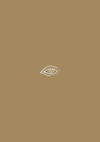This is for thePlasticsPro
Join the Club to enjoy unlimited access to all of thePlasticsFella.
Join the Club
Already have an account?
Sign in

Join the Club to enjoy unlimited access to all of thePlasticsFella.
Join the ClubA curated suite of educational tools designed specifically for the evidence-based Plastic Surgeon.
Go Pro with a Free Trial